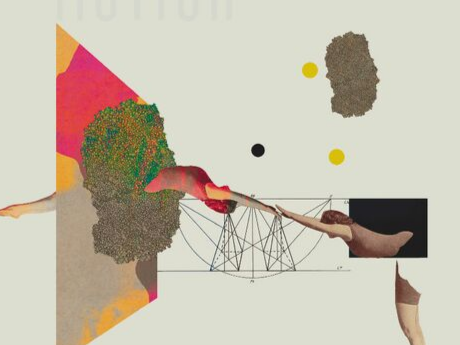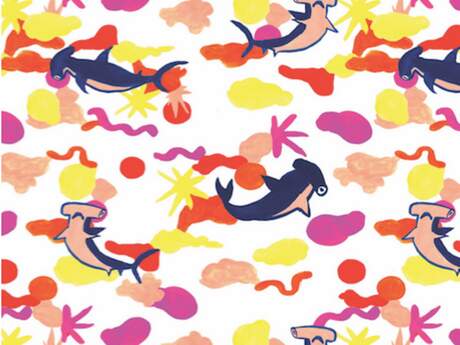Q & A: Chapbook Publishers
Mike Young on Magic Helicopter Press

Mike Young is the author of three books: We Are All Good If They Try Hard Enough, Look! Look! Feathers, and the forthcoming Sprezzatura. His newest release is the chapbook Who Can Make It from Big Lucks Books. He publishes NOÖ Journal, runs Magic Helicopter Press, and writes for HTMLGIANT. Find him online here and on the bus in Northampton, MA.
***
What is your own personal history with chapbooks? How did they first catch your interest?
Though I was never into comic books as a kid, I was into handmade zines and other staplebound ephemera. I actually think an ancestor of my interest in chapbooks was my teenage interest in the booklets that came with my music and PC game CDs. The good ones made the effort to pack in lyrics (CDs) or weird backstories (games), and the best ones recognized the opportunity for interesting design choices in the booklet itself. Then, at Southern Oregon University, my professor Kasey Mohammad opened a poetry workshop class one day by dumping a huge bag of chapbooks on his desk and letting us go wild. That's when I first started learning about their identity as currency and artifact in the poetry world.
What made you first decide to start publishing chapbooks?
They seemed easy to make and share. All my publishing impulses come from a basic "You've got to read this" sharing impulse, and chapbooks seemed the fastest logical step forward after running a free DIY literary print magazine for a few years. I remember also thinking that the flash fiction world I was heavily invested in wasn't as represented in the chapbook arena as it could be, which seemed silly to me, as the formats gel pretty elegantly. The first couple chapbooks Magic Helicopter Press made were of very short stories (Mary Miller's Less Shiny) and prose poems with photographs (Benjamin Buchholz's Thirteen Stares).
Could you talk a little bit about your own process of making and publishing chapbooks?
It's changed over the years. At first, I made them all myself, meticulously and ridiculously. I thought it would be cool to have very fancy cardstock covers with full color images stickered on. This was pretty dumb. The truth is, I'm not so handy. My model cars all had too much glue in the engine departments. Or compartments. I couldn't even get the right prefix in front of my partments. But I enjoy the actual design work, which I do on a clean and safe computer that hides its whirring deeply away from me. Then I send these designs to people who work with machines I never want to touch or see, and they make beautiful things we can all touch.
These days, I should add, Tyler Gobble is in charge of most all of Magic Helicopter Press's chapbooks. He's doing stellar and enthusiastic work. Our two most recent chapbooks, Carrie Lorig's nods. and Meagan Cass's Range of Motion, are the product of his editing and shaping, and their success is the result of his promotional zeal. All I do is make sure they're pretty.
What is unique about the chapbook form, or why chapbooks and not book-books?
Magic Helicopter Press makes book-books, as well as electronic books, but I would hazard forth something that I'm guessing plenty of other chapbook publishers will say in their answers to these questions: I don't see chapbooks as not book-books. Or I don't see paperbound/ hardbound/ big books as somehow more legitimate than chapbooks.
Even poets who love chapbooks tend to treat them like EPs or business cards (hat tip to Joe Massey for that insight) in their heart of hearts while they knuckle away for that "legitimizing" paperbound. And sure, I've thought this way myself. And I have plenty of skeptical friends who make fun of chapbooks and allude to overweight motorcyclers wearing overwrought chaps. But these friends are scared of motorcycles, I bet. A better way of thinking about chapbooks is the way New Englanders think about candlepin bowling. Regular bowling, they insist, is actually "big ball bowling." Candlepin bowling requires more precision and finesse, which makes it more deserving of the top spot in the competition of "what pops into your head when you say or think 'bowling' without any qualifiers." Since I'm from Northern California, all my serious opinions stop at hacky sacks, skateboarding, and almond orchards, but these people from New England probably have a point about bowling and—by extension—about chapbooks.
For more on this, I recommend James Haug's Why I Love Chapbooks.
Do you have a recent favorite chapbook from another press?
So many! I haven't had the chance to dig into my AWP haul yet, but here's a sampling of some recent goodies, including several I got at Berl's Poetry Bookstore in Brooklyn: Tyler Gobble's 48 Pornos, Ari Feld's A Straight Line Shaped Like a Knot, Mark Cugini's I'm Just Happy to Be Here (which is "as long as" a "real book" and gives lie to the whole chapbook/ bookbook dichotomy as earlier discussed), Leora Fridman's translations of Eduardo Milán's poems, and Tony Mancus's Diplomancy.
My all time favorite chapbook is Elisa Gabbert's Thanks for Sending the Engine.

